Analysis of Modular Stator PMSM Manufactured Using Oriented Steel
Abstract
1. Introduction
2. Modelling of Anisotropic Steel in the Segmented Stators
3. Proposed Method for the Extraction of the Magnetic Properties of Oriented Steel
3.1. Basic Idea of the Proposed Method
3.2. Application of the Proposed Method
- Sensor spans one tooth in stator (Sensor A);
- Sensor spans six teeth in stator (Sensor B);
- Sensor spans thirteen teeth in stator (Sensor C).
- The symmetric placement of the sensor is denoted by “”. For example, for sensors A, B, and C the symmetric placement of sensors with respect to the symmetrical line are denoted by , , and , respectively;
- The second position of the sensor is its anti-clockwise shift from position 1. For sensors A, B, and C, these positions are denoted by , , and , respectively;
- Similarly, the third position of the sensor is its anti-clockwise shift from position 1.
4. Experimental Set-Up, Estimation of BH and Loss Curves, and Experimental Results
4.1. Experimental Set-Up
4.2. Procedure for the Estimation of BH and Loss Curves of the Oriented Steel
4.3. Experimental Results
5. Analysis of Oriented Steel Modular Stator PMSM
5.1. Variation of and
5.2. Comparison of Core Loss
5.3. Comparison of Average Torque
6. Selection of the Number of Segments for the Best Possible Performance of the Machine
- Selection of Number of Segments for the Oriented Steel ModelFirst, it is clear from Figure 23 that the increase in average torque is much less than the increase in core loss as the number of segments is decreased from 18 to 4. Second, the increase in core loss from to is negligibly small; however, there is a significant increase in the average torque. Third, for 8, 9, and 4 segments, there is an increase in the average torque as compared to . However, the increase in core loss is far greater than the increase in the average torque. The value of the lower torque for can be compensated by injecting a slightly higher current, which will lead to slightly higher core and copper losses. An analysis of the machine with an increased current is part of future work, and beyond the scope of this paper. Nevertheless, considering the two objectives of average torque and core losses, it can be inferred that for , the best possible performance is obtained from a machine consisting of 12 segments.
- Selection of Number of Segments for the Non-Oriented ModelFigure 23 shows the almost-linear trend of the increase in core losses and average torque for the machine, from to . This is due to the fact that as the number of segments decreases, the flux in the machine increases, which then leads to a decrease in both core loss and average torque. Similar to the case, the lost torque can be increased by injecting slightly more current. Only an analysis that considers both core loss and copper loss at higher values of current for same torque can provide details for the best possible selection of the number of segments for .
7. Conclusions
Author Contributions
Funding
Institutional Review Board Statement
Informed Consent Statement
Conflicts of Interest
References
- Li, G.J.; Zhu, Z.Q.; Foster, M.; Stone, D. Comparative Studies of Modular and Unequal Tooth PM Machines Either With or Without Tooth Tips. IEEE Trans. Magn. 2014, 50, 1–10. [Google Scholar] [CrossRef]
- Aggarwal, A.; Strangas, E.G.; Karlis, A. Review of Segmented Stator and Rotor Designs for AC Electric Machines. In Proceedings of the 2020 International Conference on Electrical Machines (ICEM), Gothenburg, Sweden, 23–26 August 2020; pp. 2342–2348. [Google Scholar]
- Huang, S.; Strangas, E.G.; Aggarwal, A.; Li, K.; Niu, F. Robust Inter-turn Short-circuit Detection in PMSMs with Respect to Current Controller Bandwidth. In Proceedings of the 2019 IEEE Energy Conversion Congress and Exposition (ECCE), Baltimore, MD, USA, 29 September–3 October 2019; pp. 3897–3904. [Google Scholar]
- Huang, S.; Aggarwal, A.; Strangas, E.G.; Li, K.; Niu, F.; Huang, X. Robust Stator Winding Fault Detection in PMSMs With Respect to Current Controller Bandwidth. IEEE Trans. Power Electron. 2021, 36, 5032–5042. [Google Scholar] [CrossRef]
- Aggarwal, A.; Strangas, E.G.; Agapiou, J. Robust Voltage based Technique for Automatic Off-Line Detection of Static Eccentricity of PMSM. In Proceedings of the 2019 IEEE International Electric Machines Drives Conference (IEMDC), San Diego, CA, USA, 12–15 May 2019; pp. 351–358. [Google Scholar]
- Aggarwal, A.; Allafi, I.M.; Strangas, E.G.; Agapiou, J.S. Off-Line Detection of Static Eccentricity of PMSM Robust to Machine Operating Temperature and Rotor Position Misalignment Using Incremental Inductance Approach. IEEE Trans. Transp. Electrif. 2021, 7, 161–169. [Google Scholar] [CrossRef]
- Aggarwal, A.; Strangas, E.G. Review of Detection Methods of Static Eccentricity for Interior Permanent Magnet Synchronous Machine. Energies 2019, 12, 4105. [Google Scholar] [CrossRef]
- Li, G.J.; Zhu, Z.Q.; Foster, M.P.; Stone, D.A.; Zhan, H.L. Modular Permanent-Magnet Machines With Alternate Teeth Having Tooth Tips. IEEE Trans. Ind. Electron. 2015, 62, 6120–6130. [Google Scholar] [CrossRef]
- Tomida, T.; Sano, N.; Hinotani, S.; Fujiwara, K.; Kotera, H.; Nishiyama, N.; Ikkai, Y. Application of fine-grained doubly oriented electrical steel to IPM synchronous motor. IEEE Trans. Magn. 2005, 41, 4063–4065. [Google Scholar] [CrossRef]
- Sugawara, Y.; Akatsu, K. Characteristics of a Switched Reluctance Motor using Grain-Oriented electric steel sheet. In Proceedings of the 2013 International Conference on Electrical Machines and Systems (ICEMS), Busan, Korea, 26–29 October 2013; pp. 18–23. [Google Scholar] [CrossRef]
- Ma, J.; Li, J.; Fang, H.; Li, Z.; Liang, Z.; Fu, Z.; Xiao, L.; Qu, R. Optimal Design of an Axial-Flux Switched Reluctance Motor With Grain-Oriented Electrical Steel. IEEE Trans. Ind. Appl. 2017, 53, 5327–5337. [Google Scholar] [CrossRef]
- Chwastek, K.R.; Baghel, A.P.S.; de Campos, M.F.; Kulkarni, S.V.; Szczygłowski, J. A Description for the Anisotropy of Magnetic Properties of Grain-Oriented Steels. IEEE Trans. Magn. 2015, 51, 1–5. [Google Scholar] [CrossRef]
- Liu, J.; Basak, A.; Moses, A.; Shirkoohi, G. A method of anisotropic steel modelling using finite element method with confirmation by experimental results. IEEE Trans. Magn. 1994, 30, 3391–3394. [Google Scholar] [CrossRef]
- Lin, D.; Zhou, P.; Badics, Z.; Fu, W.; Chen, Q.; Cendes, Z. A new nonlinear anisotropic model for soft magnetic materials. IEEE Trans. Magn. 2006, 42, 963–966. [Google Scholar] [CrossRef]
- Di Napoli, A.; Paggi, R. A model of anisotropic grain-oriented steel. IEEE Trans. Magn. 1983, 19, 1557–1561. [Google Scholar] [CrossRef]
- Gao, L.; Zeng, L.; Yang, J.; Pei, R. Application of grain-oriented electrical steel used in super-high speed electric machines. AIP Adv. 2020, 10, 015127. [Google Scholar] [CrossRef]
- Maraví-Nieto, J.; Azar, Z.; Thomas, A.; Zhu, Z. Utilisation of grain-oriented electrical steel in permanent magnet fractional-slot modular machines. J. Eng. 2019, 2019, 3682–3686. [Google Scholar] [CrossRef]
- Nazrulla, S.; Strangas, E.G.; Agapiou, J.S.; Perry, T.A. A Device for the Study of Electrical Steel Losses in Stator Lamination Stacks. IEEE Trans. Ind. Electron. 2014, 61, 2217–2224. [Google Scholar] [CrossRef]
- Jeong, K.; Ren, Z.; Yoon, H.; Koh, C. Measurement of Stator Core Loss of an Induction Motor at Each Manufacturing Process. J. Electr. Eng. Technol. 2014, 9, 1309–1314. [Google Scholar] [CrossRef][Green Version]
- Hayslett, S.; Strangas, E. Analytical Design of Sculpted Rotor Interior Permanent Magnet Machines. Energies 2021, 14, 5109. [Google Scholar] [CrossRef]
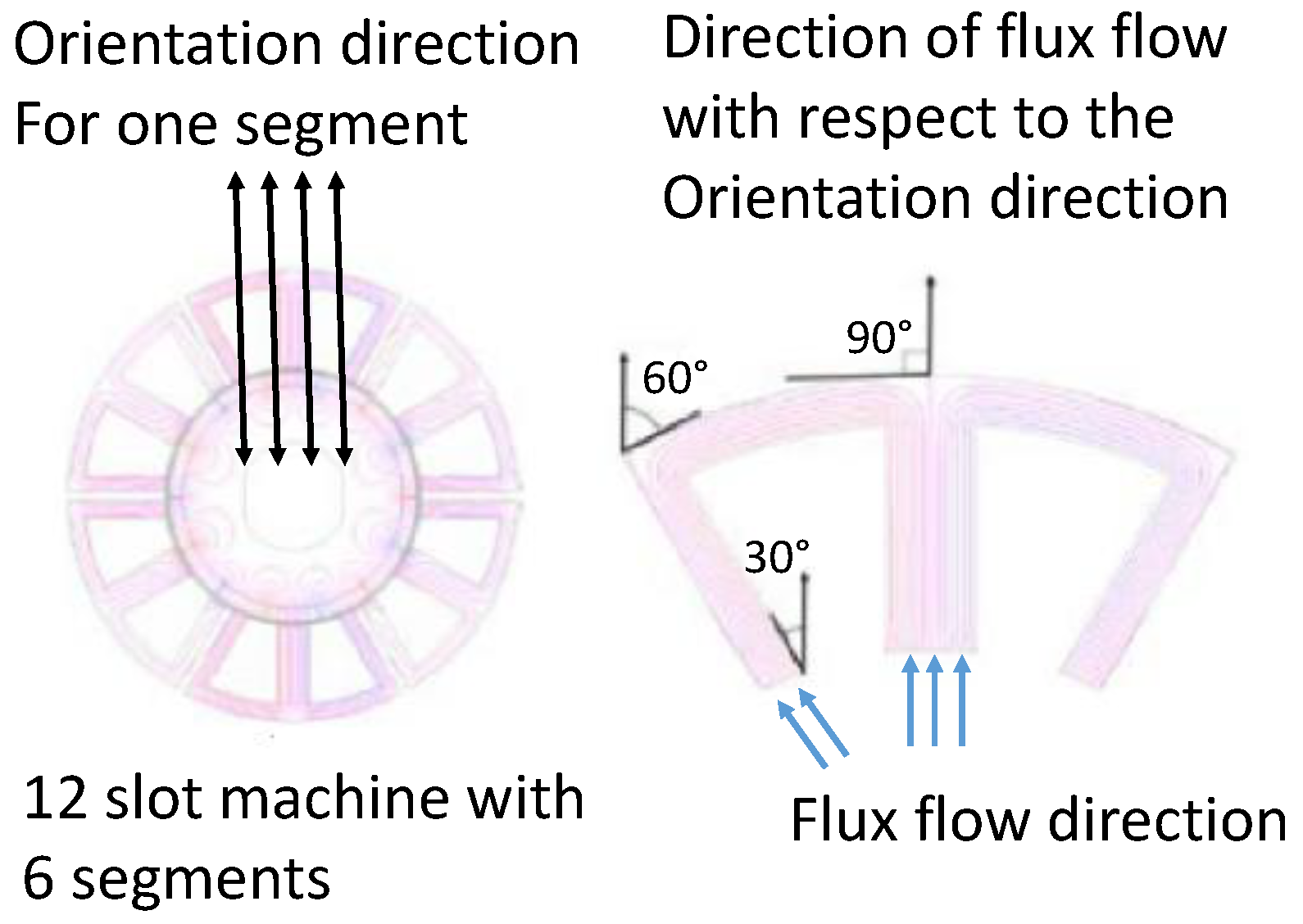
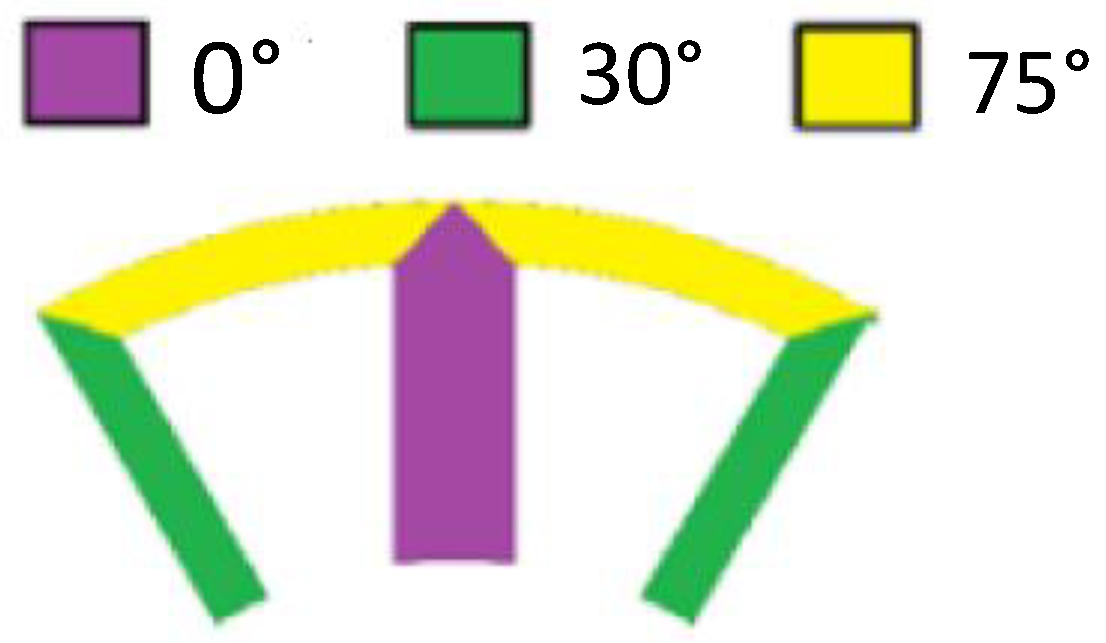

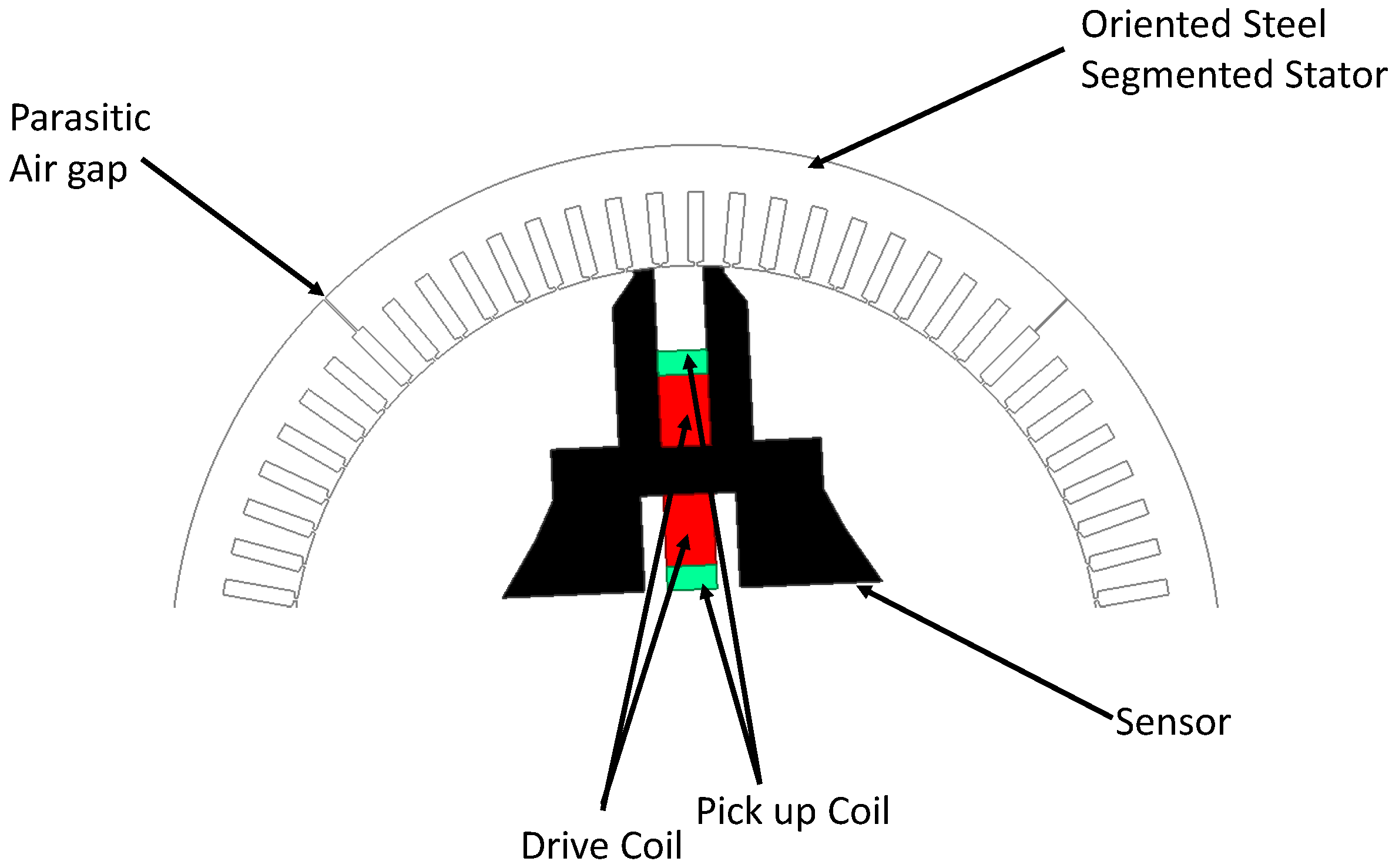

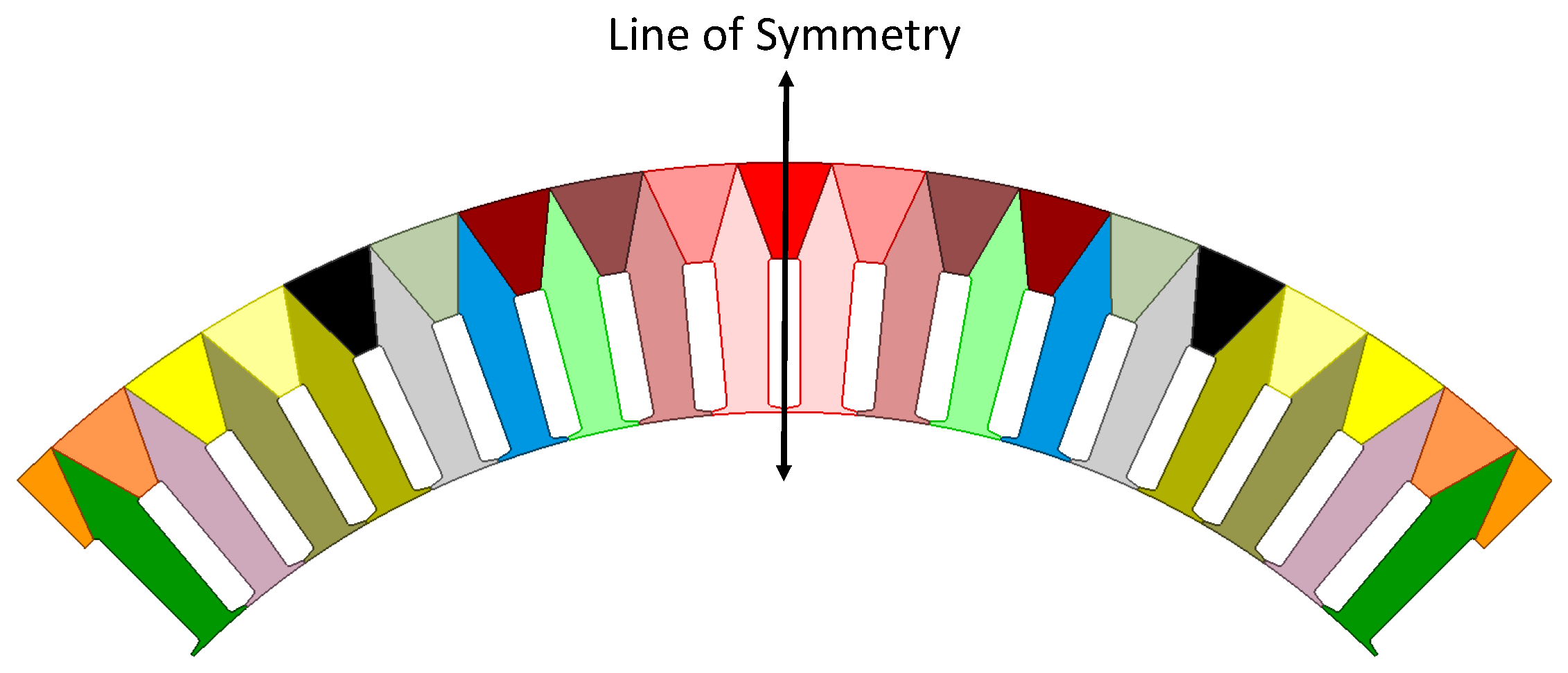
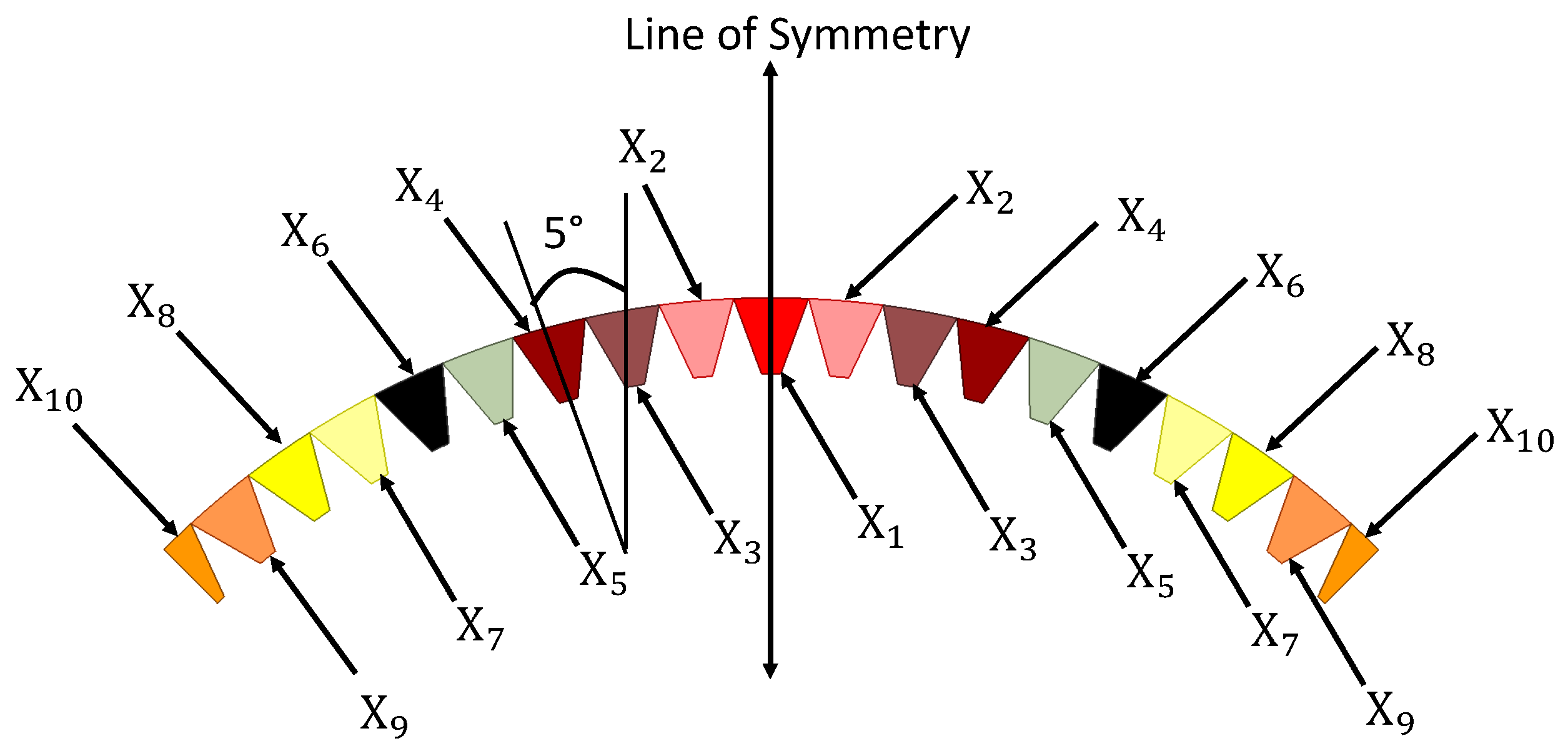
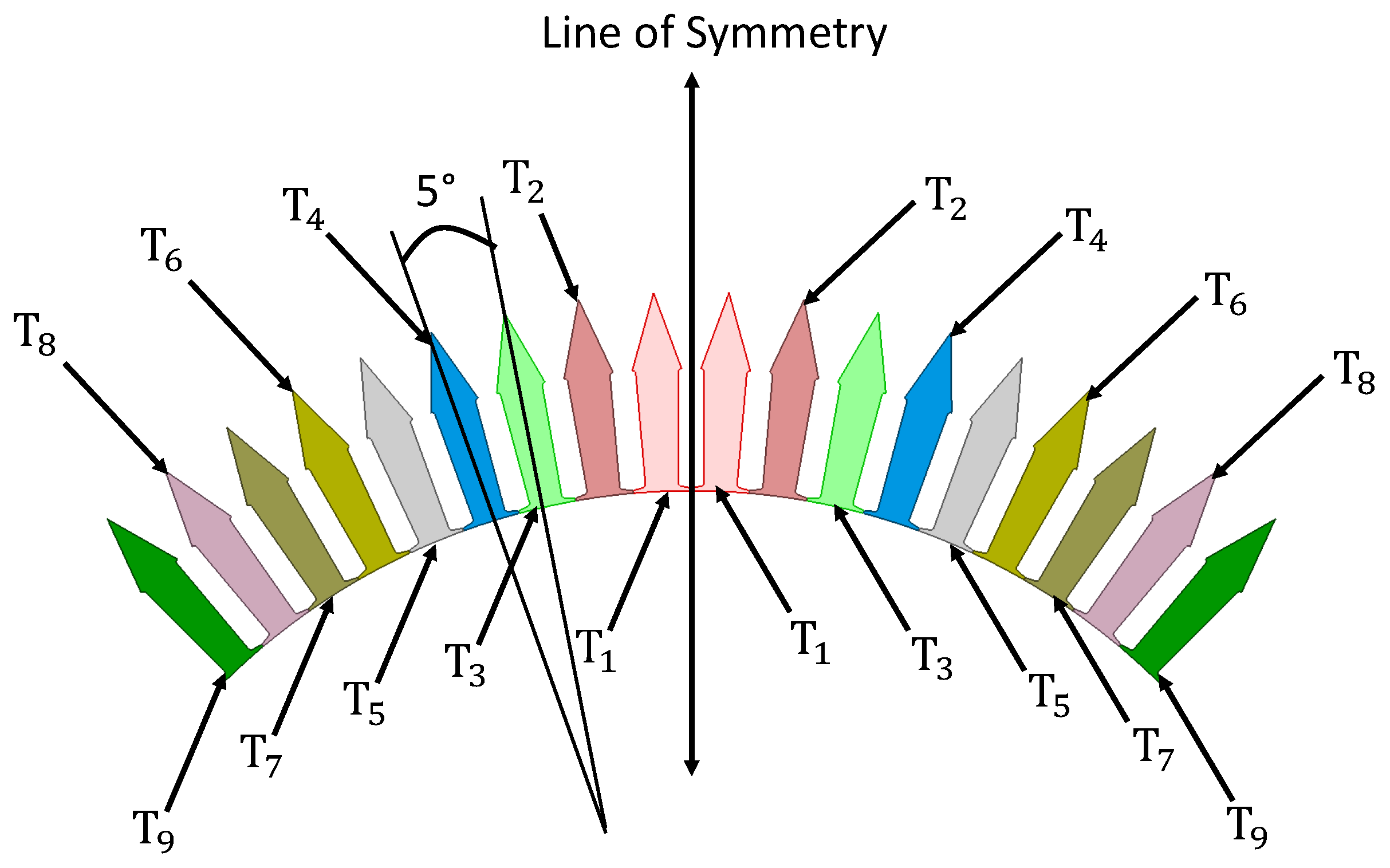

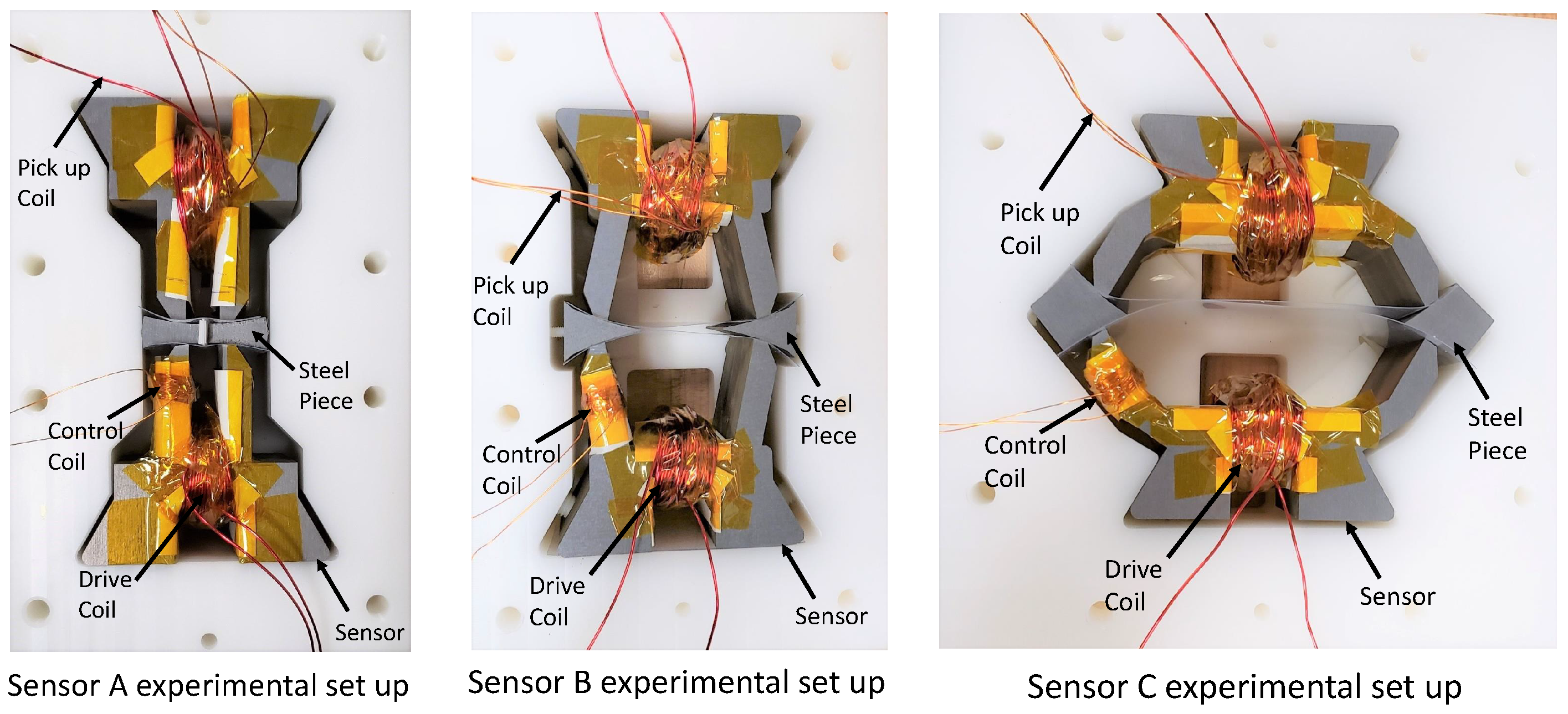



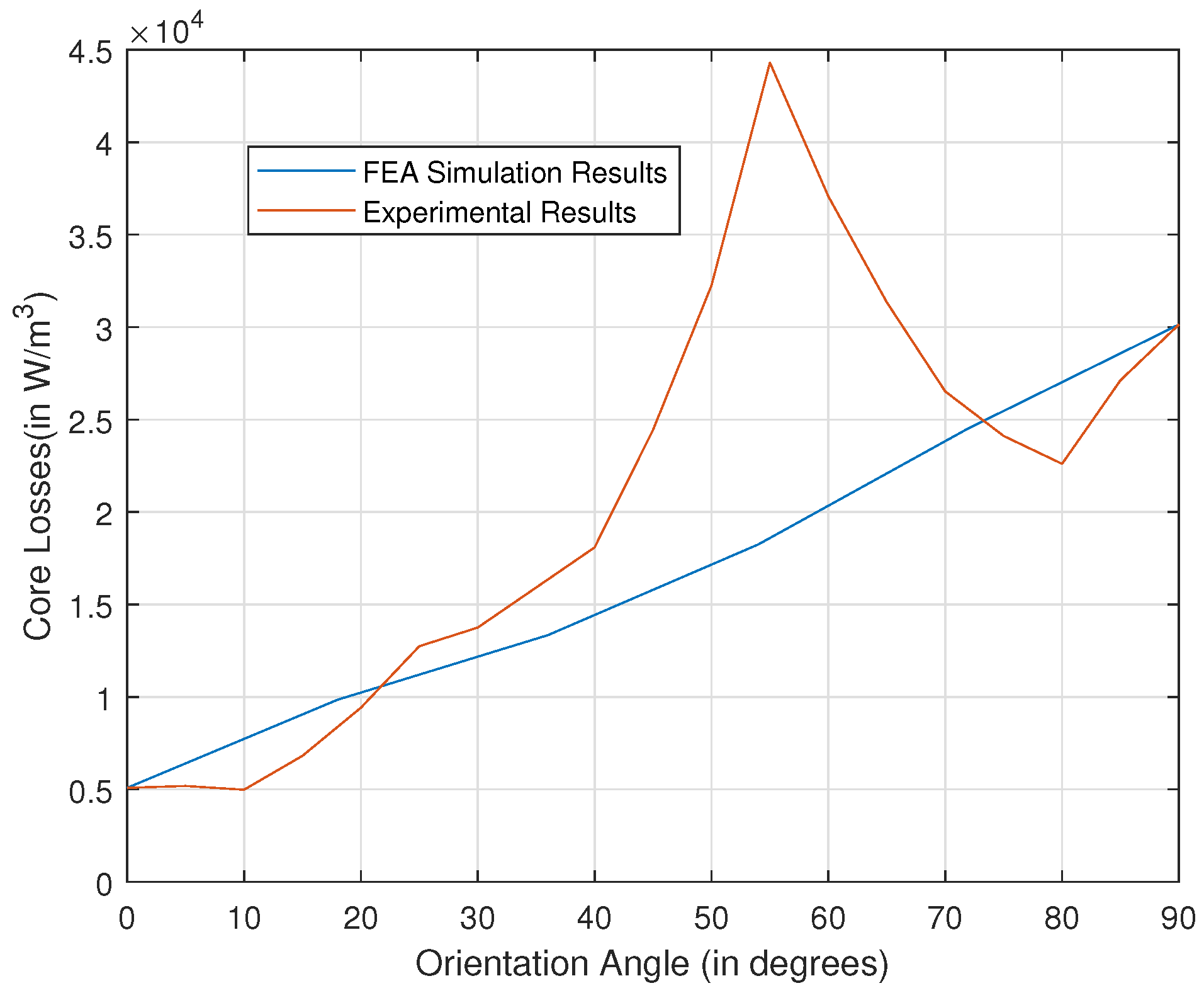
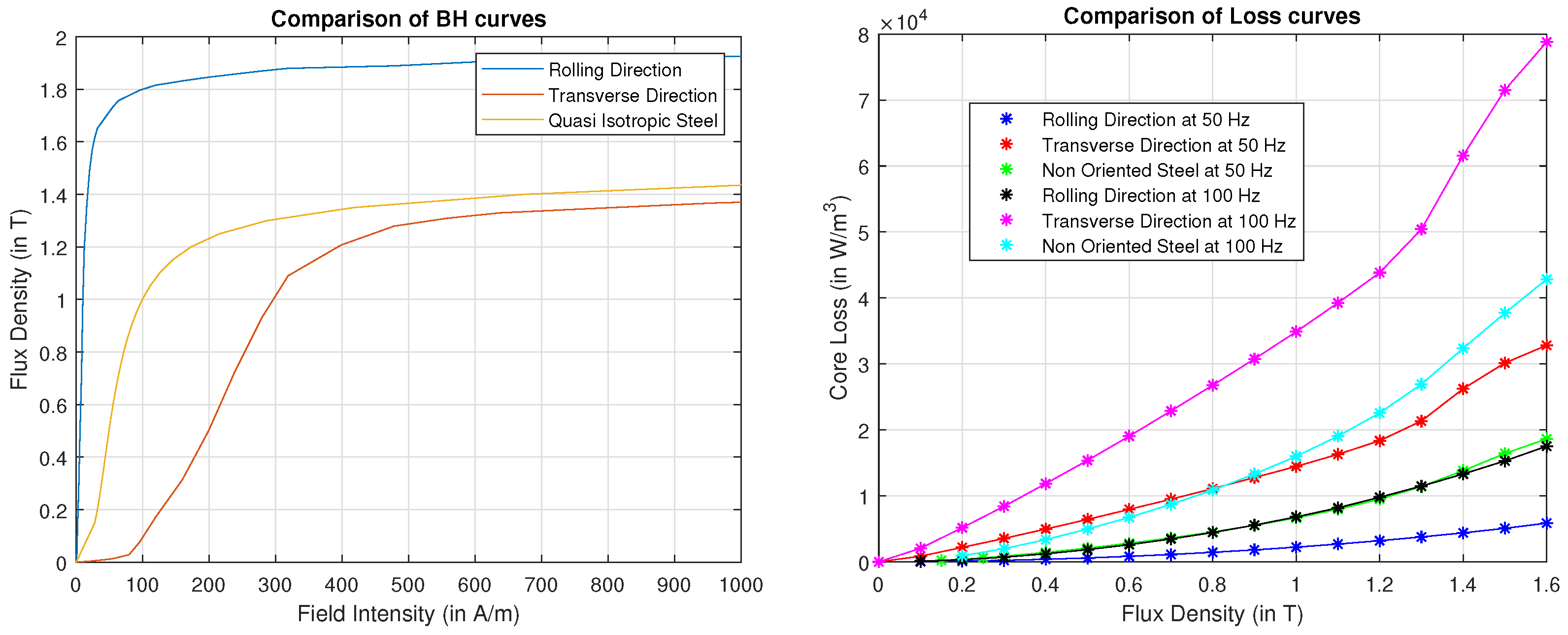
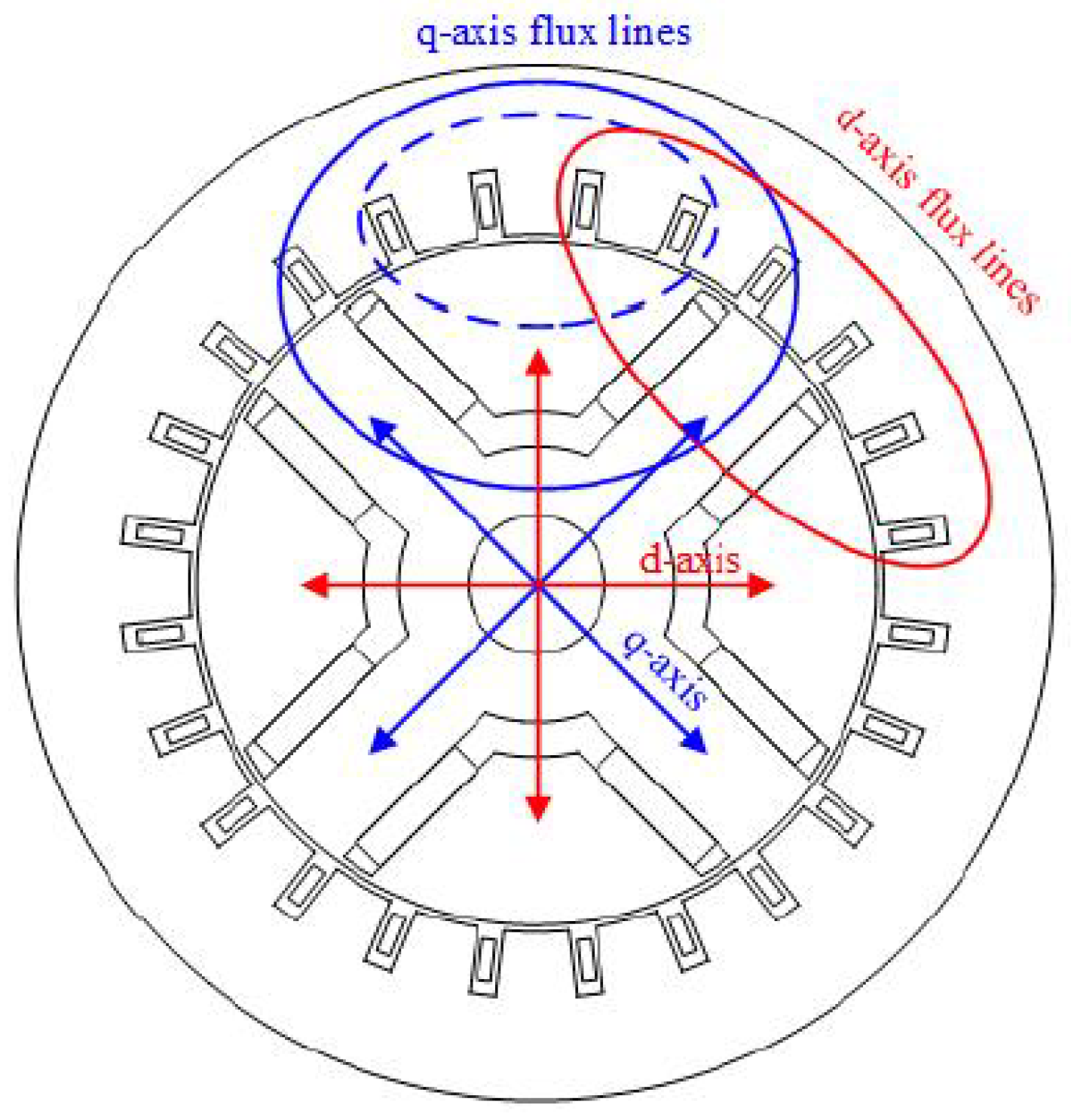

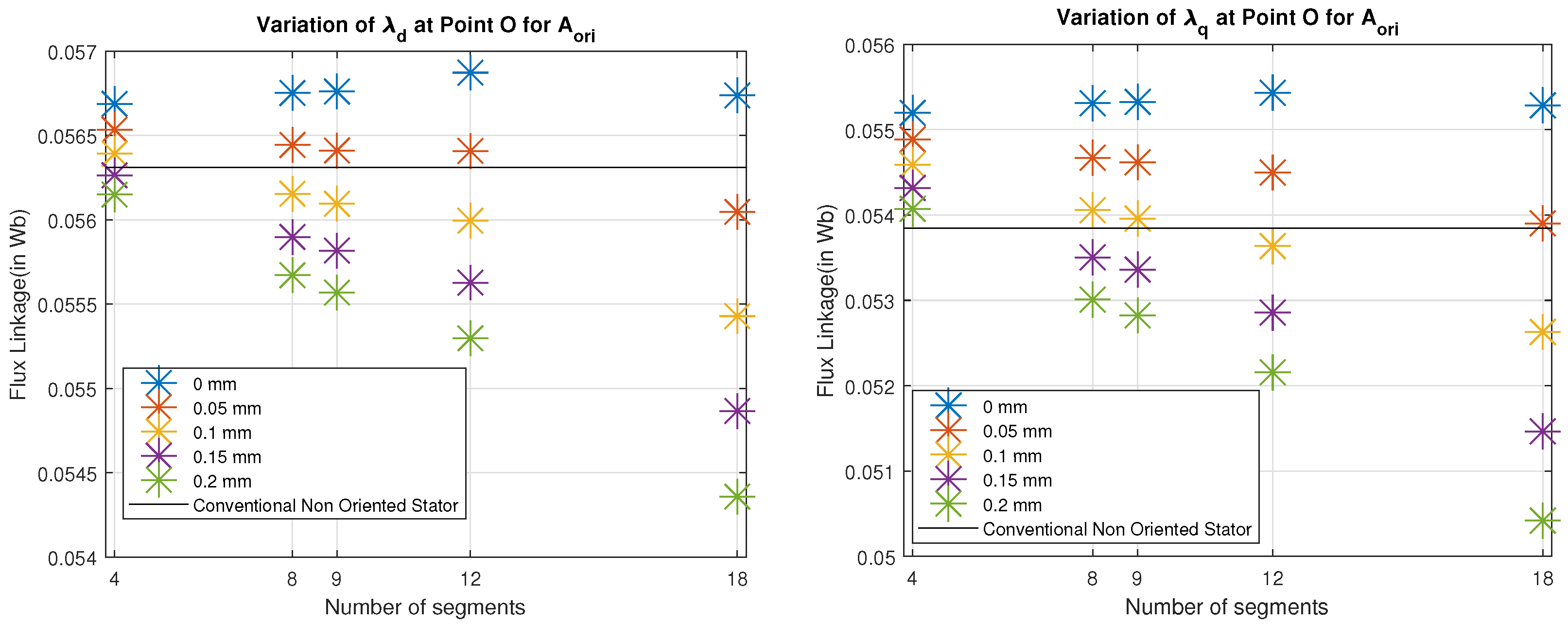
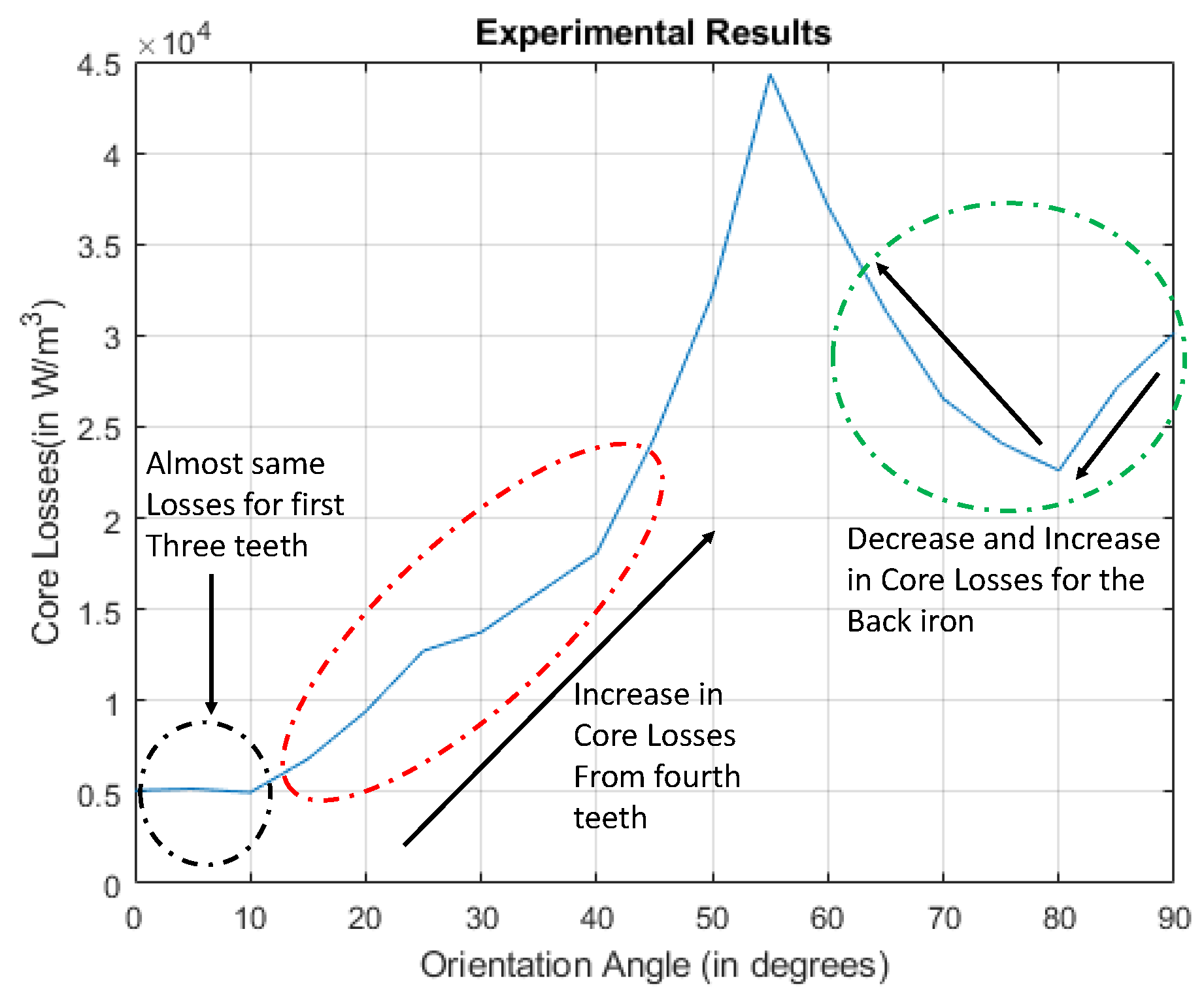
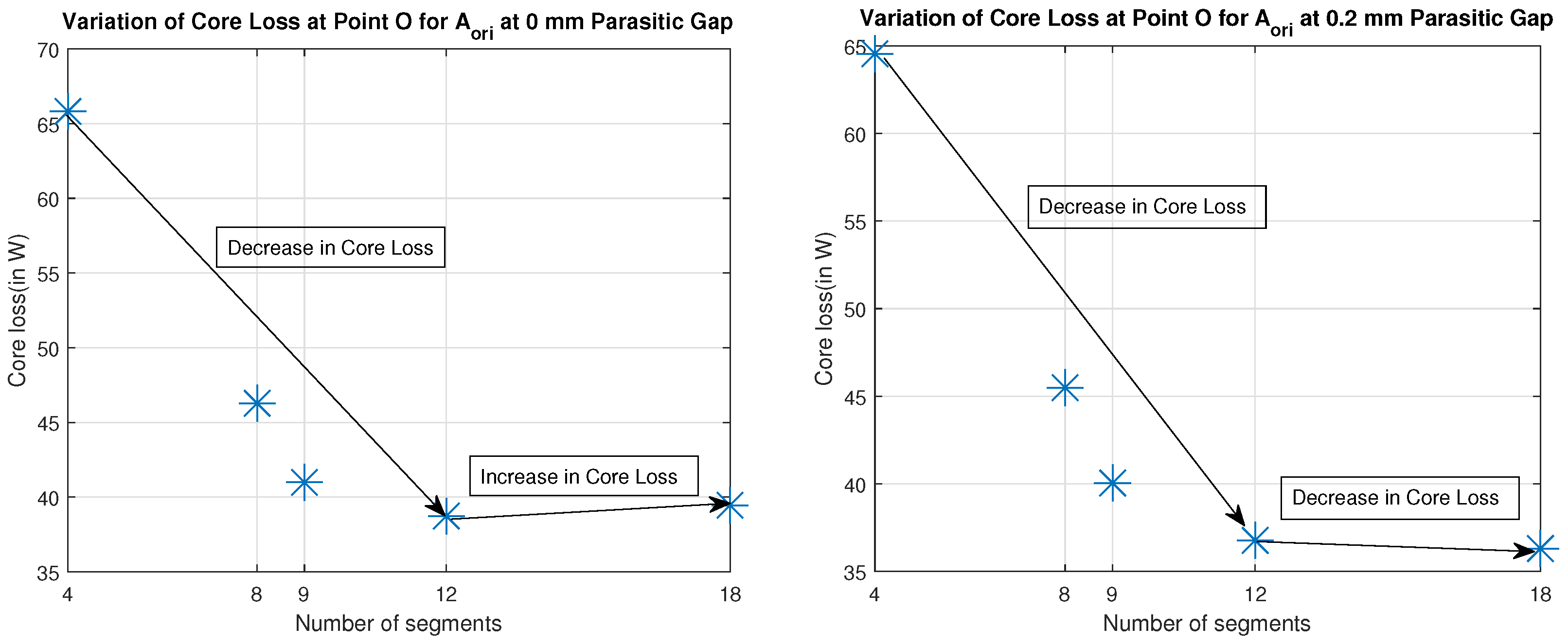
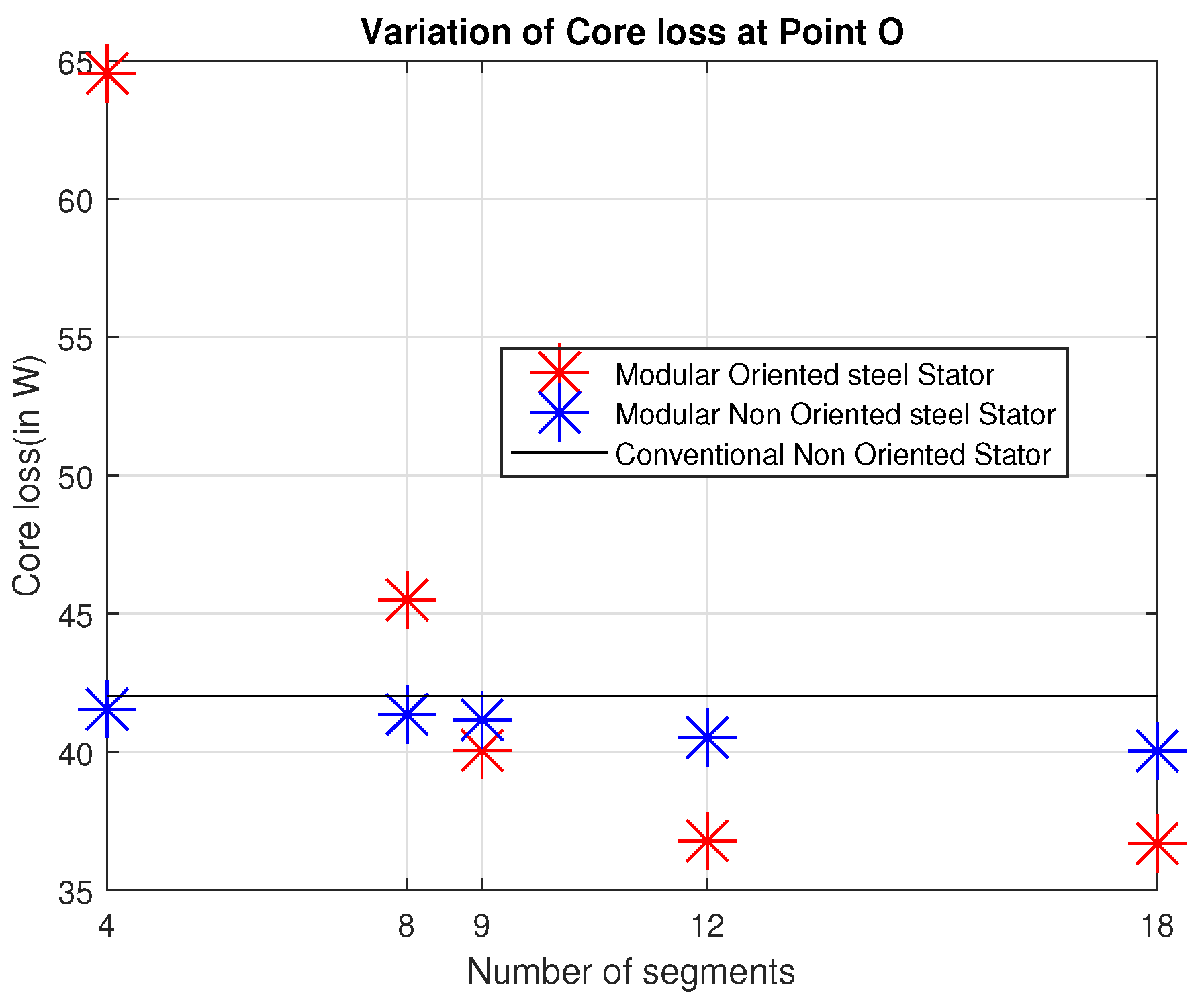
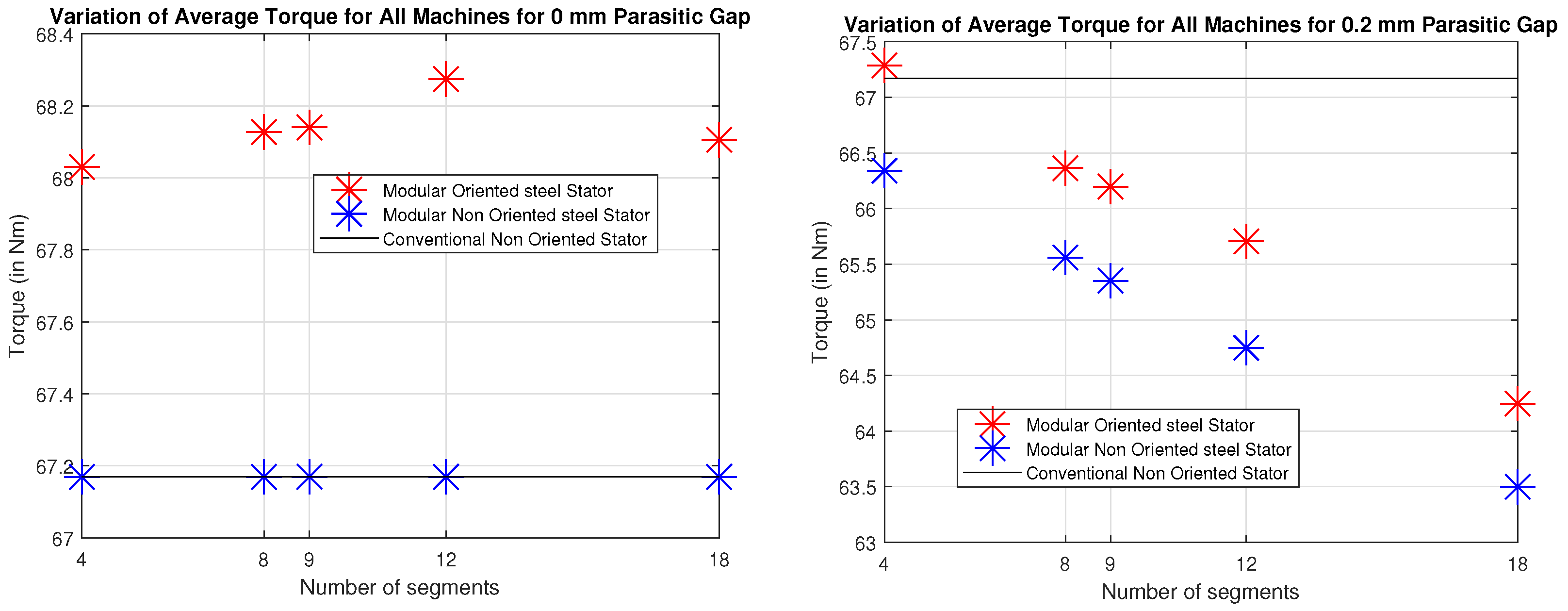
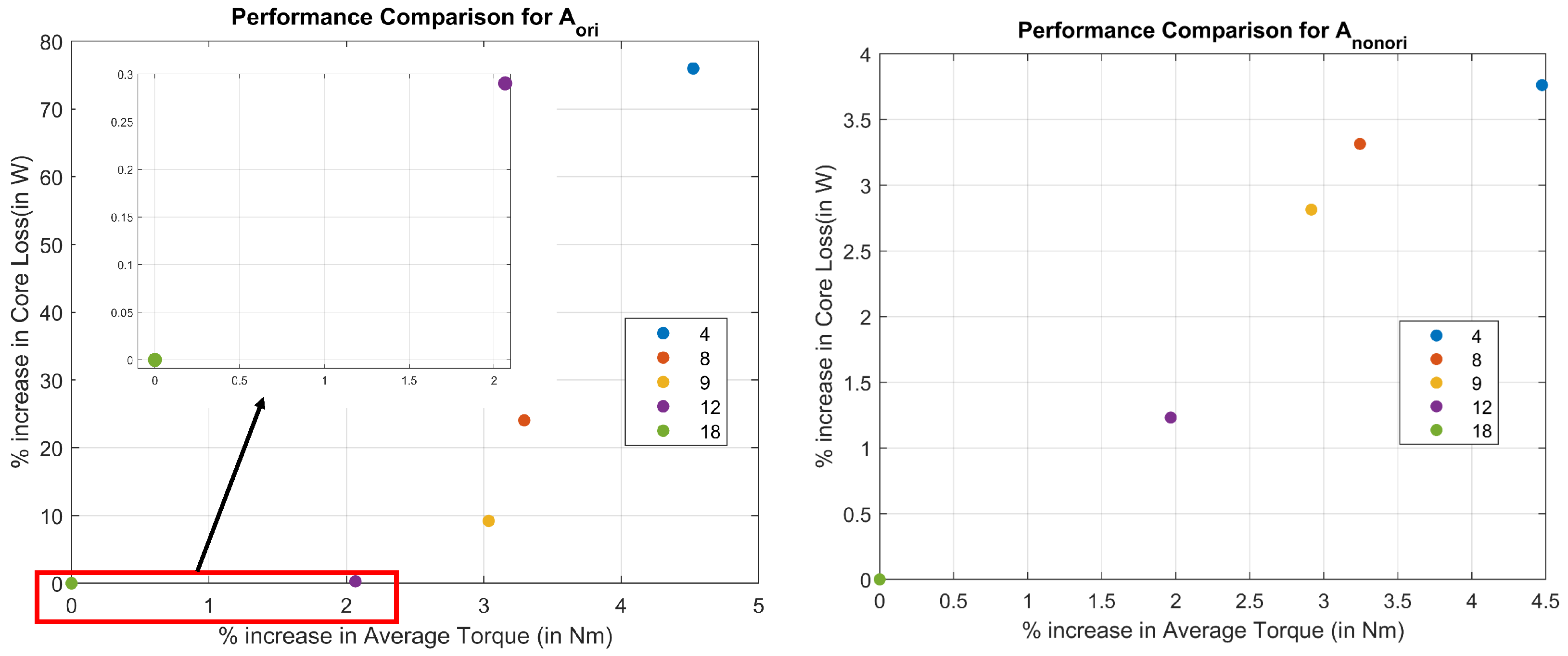
| Supply Frequency (in Hz) | Levels of (in T) |
|---|---|
| 50 | 0.2, 0.4, 0.6, 0.8, 1.0, 1.2, 1.4, 1.5 |
| 100 | 0.2, 0.4, 0.6, 0.8, 1.0, 1.2, 1.4 |
| 150 | 0.2, 0.4, 0.6, 0.8, 1.0, 1.2, 1.3 |
Publisher’s Note: MDPI stays neutral with regard to jurisdictional claims in published maps and institutional affiliations. |
© 2021 by the authors. Licensee MDPI, Basel, Switzerland. This article is an open access article distributed under the terms and conditions of the Creative Commons Attribution (CC BY) license (https://creativecommons.org/licenses/by/4.0/).
Share and Cite
Aggarwal, A.; Meier, M.; Strangas, E.; Agapiou, J. Analysis of Modular Stator PMSM Manufactured Using Oriented Steel. Energies 2021, 14, 6583. https://doi.org/10.3390/en14206583
Aggarwal A, Meier M, Strangas E, Agapiou J. Analysis of Modular Stator PMSM Manufactured Using Oriented Steel. Energies. 2021; 14(20):6583. https://doi.org/10.3390/en14206583
Chicago/Turabian StyleAggarwal, Anmol, Matthew Meier, Elias Strangas, and John Agapiou. 2021. "Analysis of Modular Stator PMSM Manufactured Using Oriented Steel" Energies 14, no. 20: 6583. https://doi.org/10.3390/en14206583
APA StyleAggarwal, A., Meier, M., Strangas, E., & Agapiou, J. (2021). Analysis of Modular Stator PMSM Manufactured Using Oriented Steel. Energies, 14(20), 6583. https://doi.org/10.3390/en14206583







